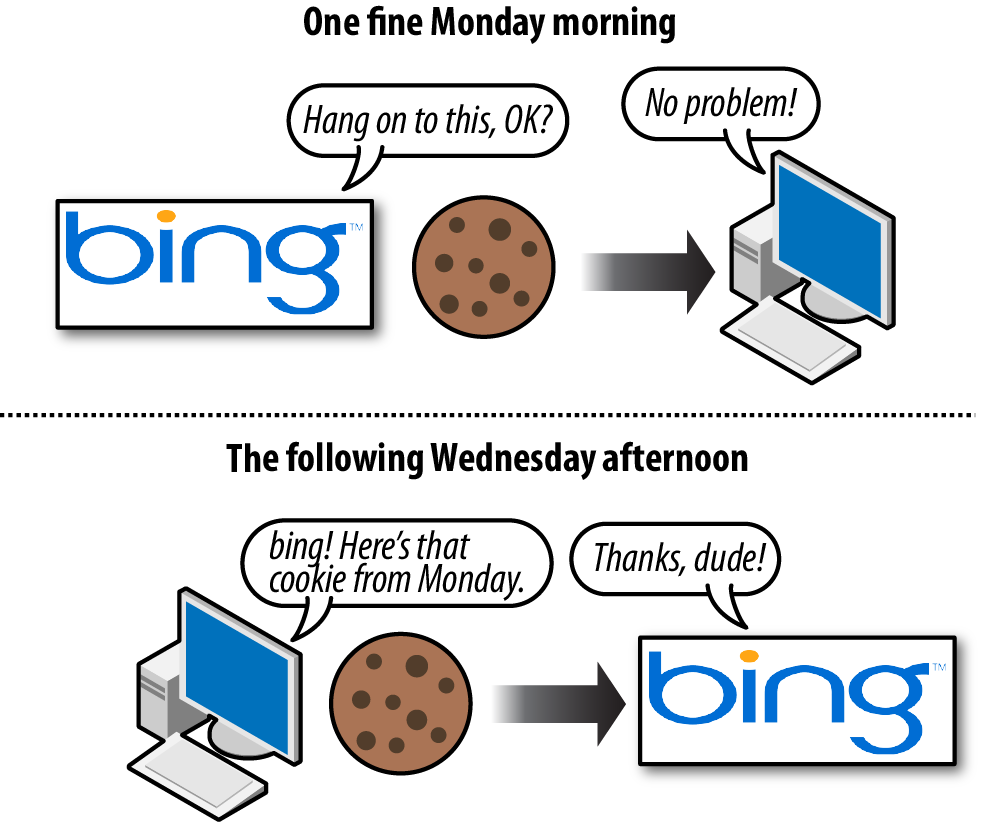Controlling Content with Cookies and Session IDs
Sometimes you want to more carefully dictate what a search engine robot sees when it visits your site. In general, search engine representatives will refer to the practice of showing different content to users than crawlers as cloaking, which violates the engines’ Terms of Service (TOS) and is considered spammy behavior.
However, there are legitimate uses for this concept that are not deceptive to the search engines or malicious in intent. This section will explore methods for doing this with cookies and session IDs.
What’s a Cookie?
A cookie is a small text file that websites can leave on a visitor’s hard disk, helping them to track that person over time. Cookies are the reason Amazon.com remembers your username between visits and the reason you don’t necessarily need to log in to your Hotmail account every time you open your browser. Cookie data typically contains a short set of information regarding when you last accessed a site, an ID number, and, potentially, information about your visit (see Figure 6-32).

Figure 6-32. Using cookies to store data
Website developers can create options to remember visitors using cookies for tracking purposes or to display different information to users based on their actions or preferences. Common uses include remembering a username, maintaining a shopping cart, and keeping track of previously viewed ...
Get The Art of SEO, 2nd Edition now with the O’Reilly learning platform.
O’Reilly members experience books, live events, courses curated by job role, and more from O’Reilly and nearly 200 top publishers.

